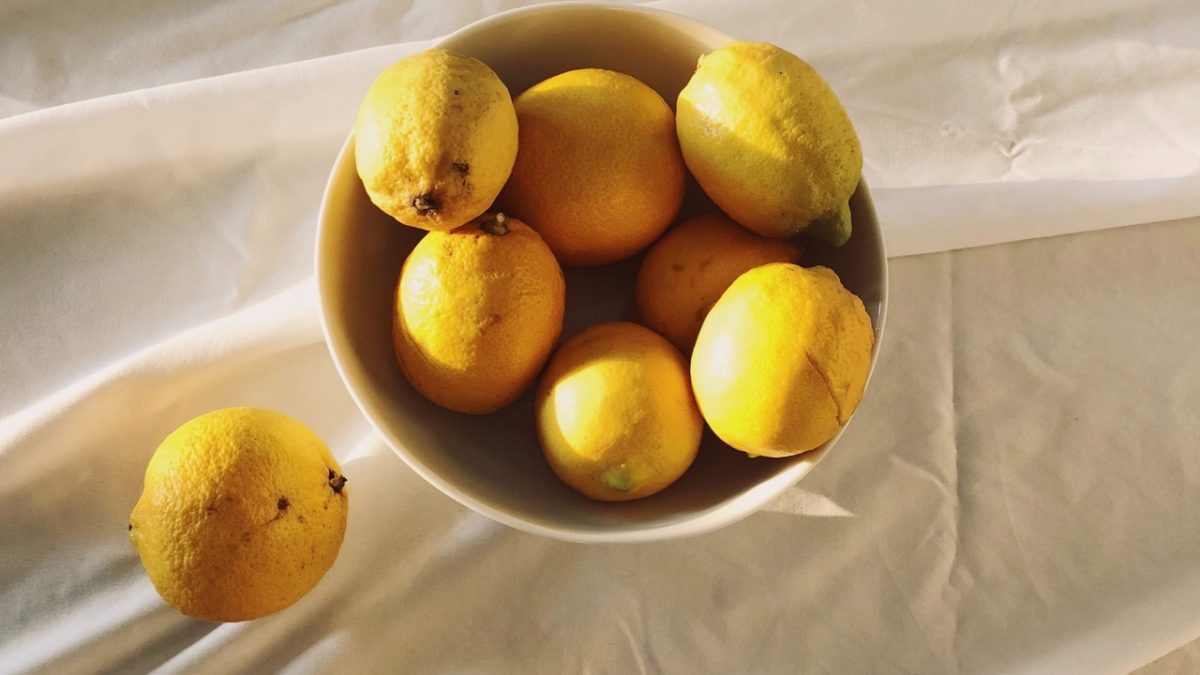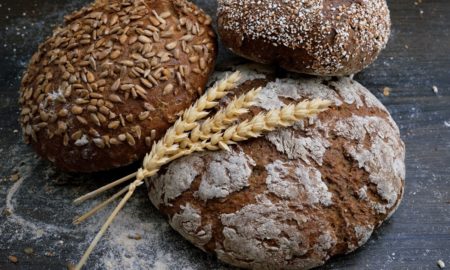You really just want to feel healthier – have more energy, maybe shed a few pounds, sleep a little better, and get rid of some bothersome digestive symptoms. Nothing fancy. Or maybe you have a chronic health condition you are trying to heal like irritable bowel syndrome, eczema, chronic allergies and sinus infections, headaches, or arthritis.
You have a hunch that changing the way you eat might help. And you’re right! Food is our first and best medicine.
But where do you start? You’ve considered doing a detox. Or maybe you should just go gluten free, or dairy free, or Paleo… But what’s the best diet for YOU? You're completely overwhelmed by the choices.
In truth, there is no one-size-fits-all diet. But there is one approach that is a great start for everyone!
Why I Start With an Elimination Diet
In my medical practice I see chronic and even serious health problems reversed every day because my patient made simple but important dietary changes based on what they experienced in their elimination diet. I have seen eczema, psoriasis, hormone problems, infertility, reflux, autoimmune diseases, diabetes, high blood pressure, high cholesterol, migraines, anxiety, chronic joint pain, gas, bloating, constipation, insomnia, chronic allergies and chronic sinus problems completely clear up – just to name a few! Patients go off of medications that they’ve been on for years!
I’ve also seen patients quickly lose the weight that they’ve been trying unsuccessfully to lose for ten years or more!
How do my patients get these results? It’s not magic or rocket science. They just get rid of the foods that are making them sick and add in foods that make people get well! It all starts with an elimination diet. And this is something you can do, too!
What is the Elimination Diet?
The Elimination Diet is an effective tool that you can use to help you identify which foods you eat that might be triggering symptoms or health problems.
It is considered THE GOLD STANDARD for identifying food sensitivities. And it costs no more than your regular groceries, doesn't require fancy supplements, books, or videos.
Its success is based on the fact that by eliminating foods that trigger inflammation in your body, you can get rid of many symptoms and diseases that have inflammation at their root. And this means most health conditions!
The elimination diet has 4 phases, but can be done for as short a time as 2-3 weeks. For more comprehensive results I recommend 4-6 weeks. Pick an achievable goal because you can always extend or repeat it. If you feel you can only hack the elimination phase for 3 weeks, pick the 3-week version. If you’ve got some stamina, the longer version is all yours! And if you feel you can't do the whole elimination at once, start with 3 food categories: gluten, dairy, and sugar.
Phase 1: Planning
- You can start your elimination diet the minute you finish reading this article! The first thing to do is make a plan. In the days leading up to your Elimination Diet:
- Clear your cabinets and fridge of foods and ingredients that contain sugar in all forms including high-fructose corn syrup, sugar substitutes and artificial sweeteners, artificial ingredients (if you can’t pronounce it, it’s probably not natural), trans-fats, coffee, alcohol, and processed ”junk” foods.
- Start to cut back on all of the above in your diet. If you are a regular coffee drinker, switching to green tea the week before the elimination diet will make your transition a lot easier.
- Fill your pantry and fridge with the foods and ingredients you’ll need for the first week of your elimination diet.
- If you are new to a natural foods diet, no worries – there is a wealth of websites with natural, healthy – and delicious – recipes that you’ll be able to eat on your elimination diet.
- Plan to start your elimination diet on a weekend so you have those first couple of days at home to get used to the changes you’ve made, and also to plan ahead with meals and any cooking prep you’ll want to do so you can bring lunches to work as needed.
- Make a mental plan for what you will do if you are craving foods that are off-limits. Examples include phoning a friend who you’ve designated as a support person while you’re doing elimination diet, writing in a journal, taking a walk or putting on some music and dancing, and having healthy food substitutes for snacks and go-to’s if your resistance is low.
Phase 2: Boot Out the Triggers
During the elimination phase you do just that – you completely avoid anything on your do not pass your lips list.
You have several options of how to roll with this:
- You can do a comprehensive elimination diet by removing all of the foods listed below,
- You can do a more specific elimination diet of just gluten, dairy, coffee, sugar, or a combination of these if you think you’ve already identified the most likely culprit, or feel you can only handle a limited amount of food eliminations at a time, or
- You can start with a more specific elimination diet of the most common triggers and eliminate additional items such as grains and beans if symptoms persist after a couple of weeks on the more liberal version.
The foods that are most important to eliminate are common food triggers of allergic and inflammatory reactions including:
- Dairy products (cheese, yogurt, milk, cream, butter, ice cream)
- Gluten-containing foods
- All flour products (if you eat grains*, they should be whole grains, for example, cooked brown rice, quinoa or millet)
- Corn
- Peanuts
- Soy
- Sugar
- Eggs
- Caffeine-containing foods and beverages (green tea is ok in moderation)
- Vinegars and fermented foods
- Yeasted products
- Alcohol
- Nightshade vegetables (tomatoes, eggplant, peppers, and potatoes)
- Poor quality oils and fried foods
- Fatty meats, processed meats
- *For some people starches are a problem, so going bean and grain free might be helpful for part of the time
- Foods that you tend to crave (these are often sneaky culprits of inflammation!)
- Foods that you already know causes symptoms
- “Comfort foods” (again, sneaky culprits and code for “craving”)
- Foods that you eat day in and day out – your body can start to see these as inflammatory triggers if you have leaky gut – which many of us do!
Ideally, many medications would be stopped, especially reflux medications, NSAIDs (ibuprofen, Naprosyn, etc.), and antibiotics – because these can have a negative impact on your digestion, but this should be medically cleared with your primary care provider!
If you have reflux and are stopping your medication, DGL licorice is a great alternative to PPIs and H2 blockers to control your symptoms and heal your stomach. The usual dose is 2-3 chewable tablets before or between meals as needed. Again, check with your primary physician.
Don't Worry! There's PLENTY to Eat!
Some of you reading this must be thinking, “Well, she’s now put my entire diet on the ‘can’t eat it list’ – so what am I gonna’ eat? Actually, most of what’s on the above list isn’t a staple part of an optimally healthy diet anyway. And there’s a LOT you CAN eat. For example, all of the following are fair game, in appropriate portion sizes, of course:
- Meat: chicken, turkey, lamb, cold water fishes like salmon or sardines
- Nuts (except peanuts), seeds, almond milk, nut butters
- Vegetables: all except nightshades
- Soups: clear broths
- Fats/oils: olive oil, walnut oil, coconut oil, sesame oil
- Grains: brown rice, quinoa, buckwheat, millet
- Legumes: lentils
- Fruits: 1 cup/day of any fresh or frozen berries, plus your choice of 1 banana in your morning shake, 1 apple, 2 kiwis (limit fruit if you have problems with chronic yeast or fungal infections, or diabetes/metabolic syndrome)
- Spices: all spices, including garlic and onions, are excellent to include – many improve digestion and metabolism; avoid those that trigger reflux if this is a problem for you
- Beverages: water, carbonated water, water with lemon, green tea, herb tea
- Sea salt to taste
Make Sure to “Take Out the Garbage” – Daily
To optimize the benefits and results of The Elimination Diet it is important to take out your garbage daily. I mean your digestive garbage! The goal is one healthy BM every day. Plenty of fiber from fresh vegetables and ample water is important. Supplements such as flax seed, psyllium, and magnesium citrate up to 600 mg/day (all available at your local pharmacy or health food store) are safe for most people to take daily and can help move things along if you're slow.
Phase 3: The Rechallenge
After you've done the elimination phase, you are going to start introducing foods back in. The caveat here is that if you are pretty sure particular foods were causing symptoms, and now you no longer have those symptoms, you can simply keep those foods out of your diet going forward, without “challenging” with them.
To do the challenge, start by reintroducing a small portion of a food from a particular food group (i.e. dairy, gluten, grain, etc.) at breakfast. If you have no reactions then larger portions with lunch and dinner. Keep the food in your diet for a couple of days. If it doesn’t cause symptoms, it is likely not a problem in the diet. If if does, then that food might be a problem for you. In this case, you either want to keep it out of your diet, or keep it out for a few months while doing a 4R Program to heal your gut, and then re-challenge with it.
Foods that cause a true allergic reaction (swelling, shortness of breath, etc.) should not be reintroduced and if there is an actual allergic reaction, medical attention should be sought.
Phase 4: After the Elimination Diet
Phew, you’re done with your elimination diet. Now what do you do?
Simple: If you’ve had clear and obvious results you can simply keep the offending foods out of your diet, making sure that you are getting your nutrition from the foods you can eat.
Working with a functional medicine doctor or nutritionist knowledgable about whole foods can also be helpful as you make sustainable make long-term changes in your diet. Healing a leaky gut, a common culprit in food intolerances, may eventually allow you to reintroduce foods with impunity.
The elimination diet takes a little bit of planning and coordination, but it is simple to do and can make a huge difference in your health!



